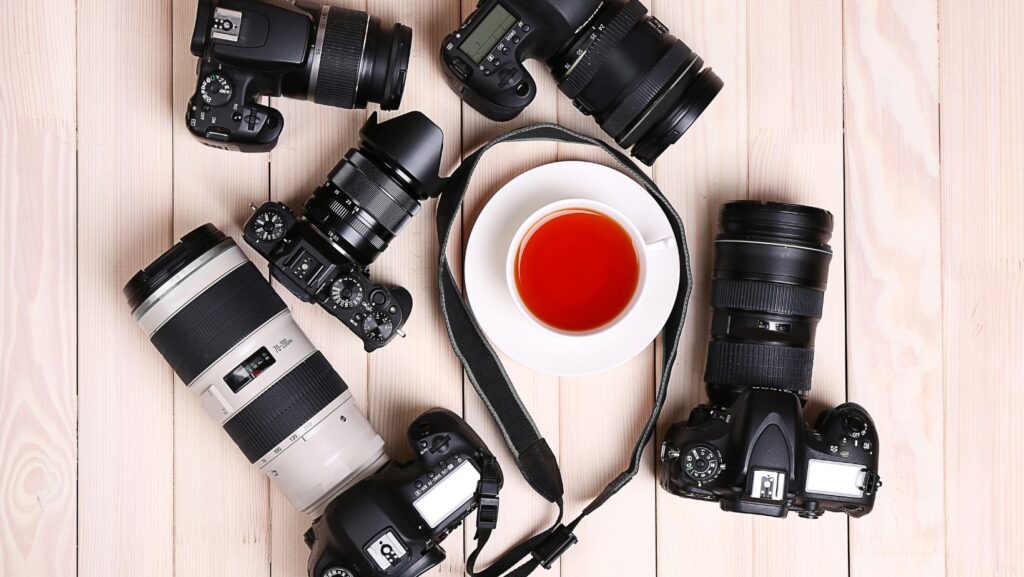
Which Best Compares a Nondigital and a Digital Camera
In the world of photography, the debate between nondigital (film) cameras and digital cameras has been ongoing for decades. While digital cameras have largely dominated the market, film cameras still hold a special place for photography enthusiasts and professionals. So, which best compares a nondigital and a digital camera? This article will explore the key differences between these two types of cameras, looking at aspects like image quality, ease of use, cost, and overall experience.
One of the most significant differences between digital and nondigital cameras is how they capture and process images. In a nondigital camera, a film roll is exposed to light, creating a negative image that is developed in a darkroom. In contrast, a digital camera uses a sensor (such as a CCD or CMOS) to capture light and convert it into digital data, which is then processed into an image.
Film cameras often produce images with a distinct, organic look due to the grain of the film and the way light interacts with it. Film also tends to handle highlights and shadows more smoothly, creating a softer transition between light and dark areas, which many photographers find aesthetically pleasing.
Digital cameras, on the other hand, provide incredibly sharp images with a high level of detail and vibrant colors. Modern digital cameras have sensors that can capture fine detail, and the ability to adjust settings like ISO, white balance, and exposure makes them highly versatile in various lighting conditions. Digital cameras also offer the advantage of immediate image previewing and editing.
Comparison: Digital cameras tend to deliver more precise and flexible results, especially in terms of sharpness and exposure control. However, many film enthusiasts appreciate the nostalgic, raw quality of images from nondigital cameras.

Cost: Upfront and Ongoing Expenses
When comparing the cost of a nondigital versus digital camera, it’s important to consider both initial investment and ongoing costs.
Nondigital (Film) Cameras:
- Initial cost: Film cameras can vary widely in price, but even high-quality film cameras are often more affordable than their digital counterparts. Vintage or manual film cameras can be found for a fraction of the price of a high-end digital camera.
- Ongoing cost: The biggest downside to film cameras is the recurring cost of purchasing film rolls and having them developed. Film processing can be expensive, and you may need to send your film to a lab for development or purchase chemicals and equipment to process it yourself.
Digital Cameras:
- Initial cost: Digital cameras can range from affordable point-and-shoot models to high-end professional DSLR and mirrorless cameras that cost thousands of dollars. The higher the quality of the camera, the greater the initial investment.
- Ongoing cost: Digital cameras eliminate the need for film and developing costs, but there are ongoing expenses related to memory cards, batteries, and possibly cloud storage or external hard drives to store images.
Comparison: While film cameras have lower upfront costs, digital cameras save you money in the long run by eliminating the need for film rolls and development. However, digital photography does require investment in storage and accessories.

Convenience: How Easy Are They to Use?
Digital Cameras: One of the primary advantages of digital cameras is their ease of use. With features like automatic settings, live previews, and the ability to review images instantly, digital cameras are incredibly user-friendly. Most digital cameras also offer advanced features like autofocus, face recognition, and scene modes that make them adaptable to a variety of shooting conditions.
Film Cameras: Using a nondigital camera requires more manual effort. Photographers must focus manually, set their exposure, and carefully consider each shot. Once the film is finished, there’s no immediate feedback on the quality of the images, as you must wait for the film to be developed. For some, this challenge is part of the appeal, as it encourages mindfulness and precision in every shot.
Comparison: Digital cameras offer a higher level of convenience due to their automatic features and instant feedback. Film cameras, however, appeal to those who appreciate a slower, more deliberate approach to photography.
In the end, both nondigital (film) and digital cameras offer unique benefits. Digital cameras are more convenient, versatile, and cost-effective over time, making them a great choice for most modern photographers. However, film cameras hold an enduring appeal for those who value the artistry, nostalgia, and tactile experience of analog photography. Whether you choose digital or film, both have their place in the world of photography, and each offers a different way to capture the world around you.

